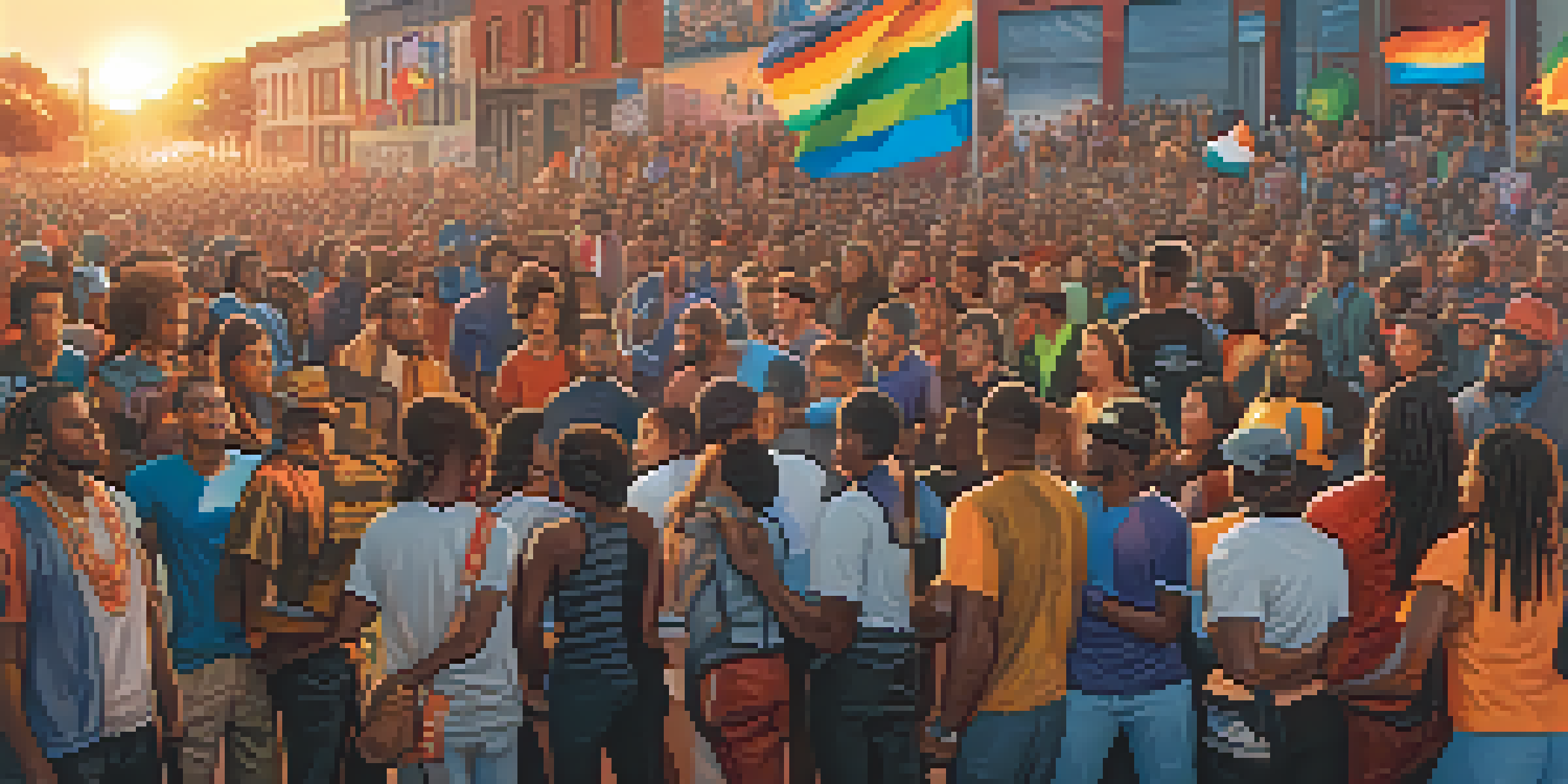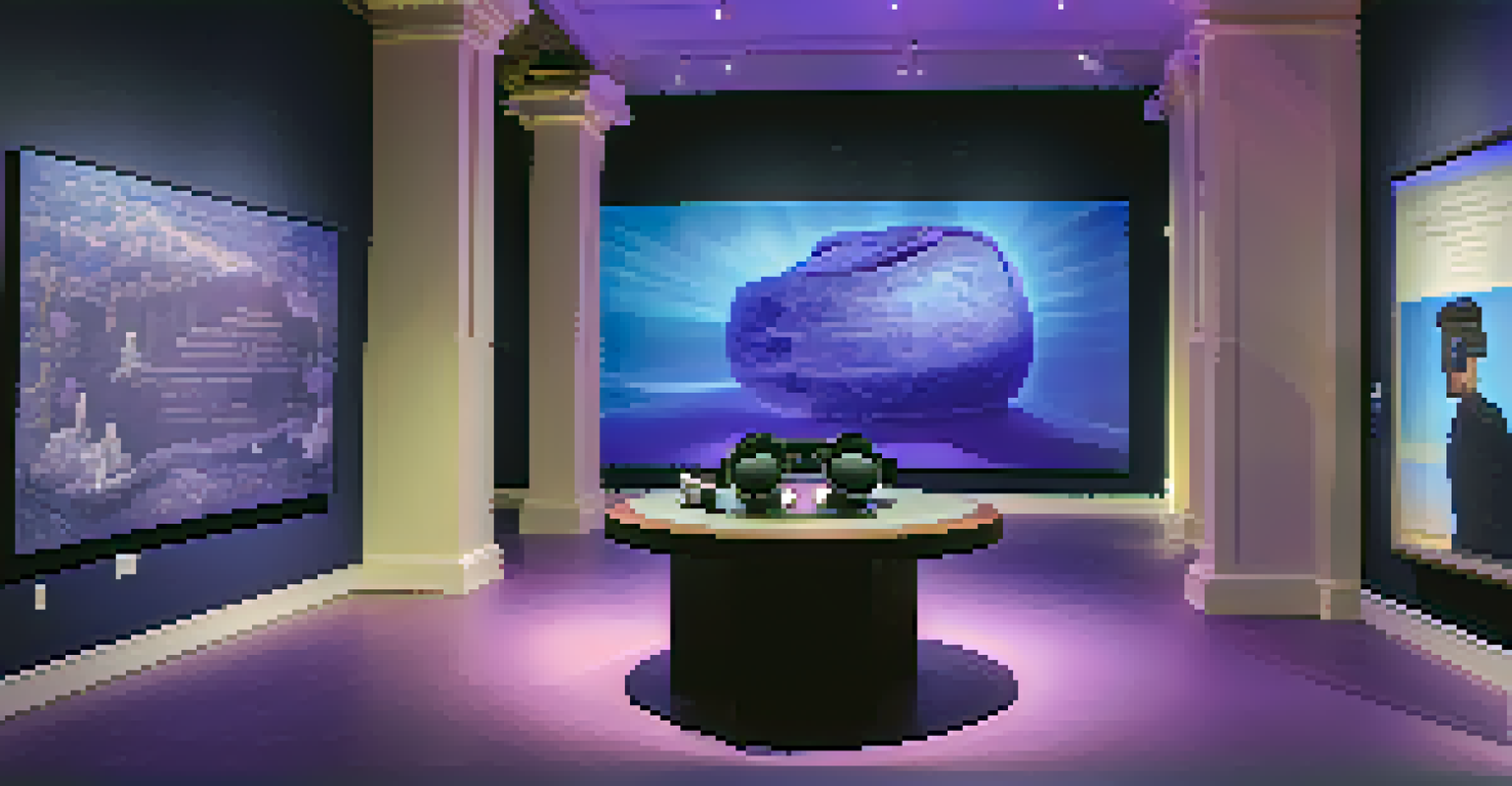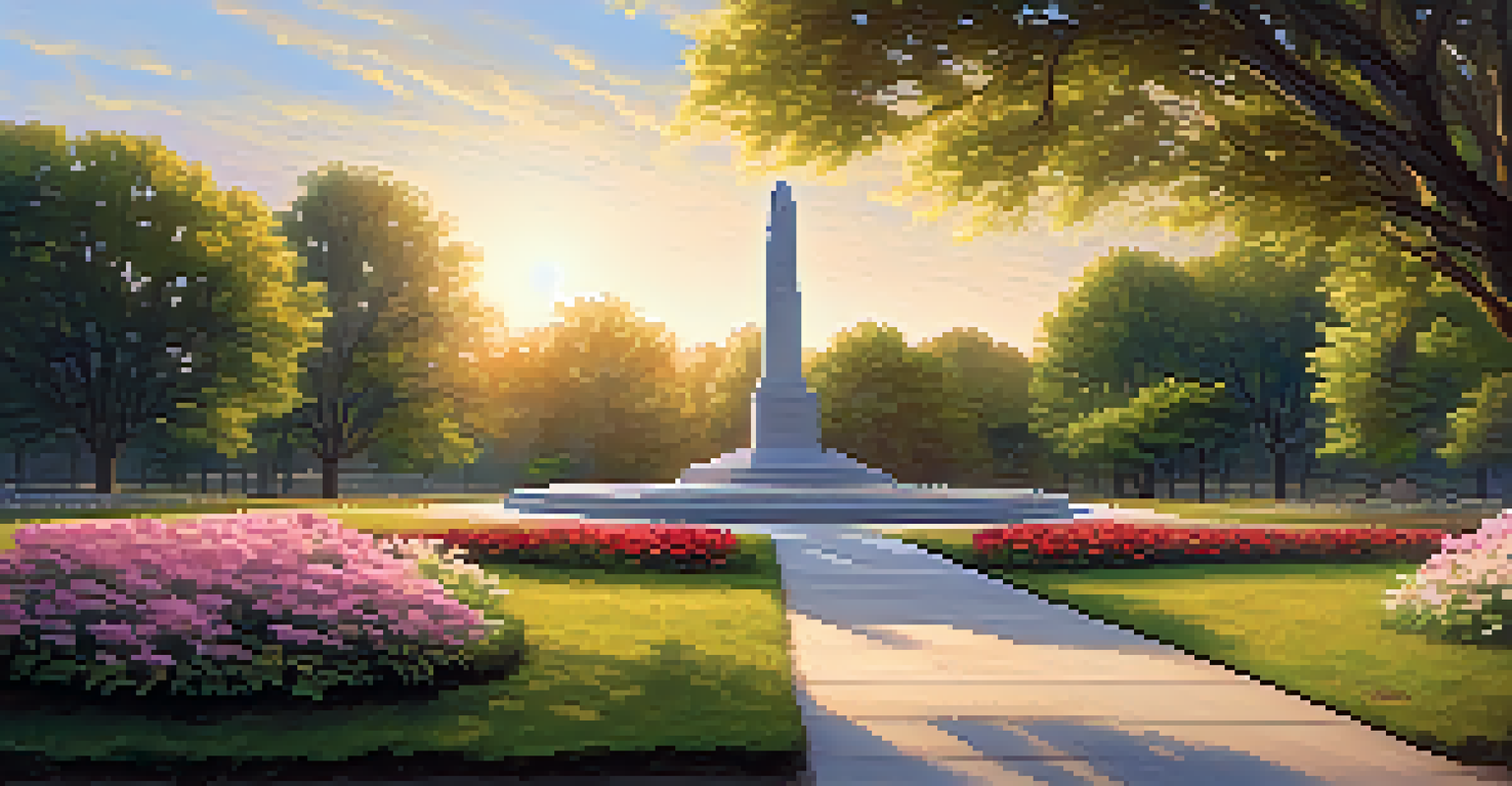The Role of Art in Remembering Historical Events and Figures

Understanding Art as a Historical Narrative
Art has long served as a powerful medium for storytelling, especially when it comes to history. Through paintings, sculptures, and other forms, artists capture the essence of events and figures, allowing viewers to connect emotionally. For instance, Picasso's 'Guernica' vividly depicts the horrors of war, making the historical event more accessible and impactful. This narrative quality of art helps ensure that significant moments are not just remembered but felt.
Art is the most beautiful of all lies.
Moreover, art transcends language barriers, making it a universal form of communication. A person from any background can interpret a powerful image, which fosters a shared understanding of historical events. This ability to resonate across cultures emphasizes the importance of art in collective memory. When we view a piece of art, we engage with history on a personal level, allowing us to internalize its lessons.
In essence, art not only preserves history but also shapes our understanding of it. By presenting facts in an engaging, relatable way, artists invite us to revisit and reflect on the past. This aspect of art is crucial, as it ensures that the stories of our ancestors are not lost but instead woven into the fabric of our cultural identity.
Art as a Tool for Commemoration
Commemoration is another vital role that art plays in remembering historical events. Memorials, statues, and monuments are powerful reminders of the lives and sacrifices made during significant moments in history. For example, the Vietnam Veterans Memorial in Washington, D.C., serves as a poignant tribute to those who served, allowing visitors to reflect on the cost of war. Such artistic expressions ensure that we honor the memories of those who might otherwise be forgotten.

Additionally, these artworks often provide a space for communal grief and healing. When people gather at memorials, they share their stories and emotions, strengthening community bonds. This collective remembrance fosters a sense of solidarity, as individuals unite in their shared history. In this way, art becomes a catalyst for conversation and connection, helping societies process their past.
Art as Historical Storytelling
Art captures and conveys historical events, allowing viewers to connect emotionally and understand the past on a personal level.
Moreover, the act of creating and maintaining these memorials keeps the memory of historical events alive. By investing time and resources in art that commemorates the past, societies signal the importance of remembering and learning from history. This commitment to remembrance through art helps ensure that the lessons of the past continue to resonate in the present and future.
Art's Role in Shaping Historical Perspectives
Art doesn't just reflect history; it also shapes how we perceive it. Artists often infuse their work with personal interpretations and critiques of historical events, pushing viewers to reconsider established narratives. For instance, contemporary artists might depict events like colonialism in ways that challenge traditional viewpoints, prompting a re-examination of history. This ability to influence perspective underscores the significance of art in shaping our understanding of the past.
Art should comfort the disturbed and disturb the comfortable.
Furthermore, art can highlight marginalized voices and stories that may have been overlooked in mainstream historical accounts. By bringing these narratives to the forefront, artists help create a more inclusive and nuanced understanding of history. This results in a richer tapestry of human experience, acknowledging the complexity of events and the diverse experiences of individuals involved.
Ultimately, art serves as a mirror reflecting society's values and beliefs, encouraging critical thinking about historical events. This engagement with art can inspire conversations about justice, memory, and identity, making it a crucial element in the ongoing discourse around history. By challenging our perceptions, art invites us to continually learn and grow from the past.
Emotional Resonance of Historical Art
One of the most compelling aspects of art is its emotional resonance. Historical artworks often evoke strong feelings, allowing viewers to connect with the events depicted on a deeper level. For example, Frida Kahlo's self-portraits, infused with her personal pain and cultural identity, offer insight into the struggles faced by individuals during her time. These emotions can make historical events feel more immediate and relevant to our lives.
Moreover, this emotional connection can drive individuals to engage more actively with history. When people are emotionally moved by a piece of art, they are more likely to seek out information about the event or figure represented. This curiosity leads to a deeper understanding of the context surrounding historical moments and can inspire advocacy for social change. Art, in this sense, becomes a gateway to greater historical awareness.
Art as a Commemorative Tool
Memorials and monuments created through art help honor significant historical moments, fostering communal grief and healing.
Art's ability to evoke emotion also serves as a reminder of our shared humanity. By connecting us to the feelings and experiences of others, art fosters empathy and understanding across different generations and cultures. This emotional bond reinforces the idea that history is not just a series of dates and facts but a rich tapestry of human experiences that continue to resonate today.
Art as a Catalyst for Social Change
Throughout history, artists have used their work to challenge societal norms and advocate for change. From protest songs to powerful murals, art has played a pivotal role in movements for civil rights, social justice, and more. For example, the works of artists like Banksy bring attention to issues such as inequality and war, inspiring conversations and action. This ability to provoke thought and motivate action underscores art's role as a catalyst for social change.
Additionally, art can serve as a powerful tool for activism. By creating visually striking representations of social issues, artists capture public attention and encourage dialogue. The visual nature of art makes it accessible to a wider audience, breaking down barriers and inviting diverse perspectives into the conversation. This democratization of art allows for a more inclusive approach to discussing historical events and their implications.
In this way, art not only commemorates history but actively participates in shaping its future. By addressing contemporary issues through the lens of history, artists remind us that the struggles of the past are still relevant today. This ongoing dialogue between art and history empowers individuals to envision a better future and take action to create it.
The Influence of Digital Art on Historical Memory
In today's digital age, art has taken on new forms, influencing how we remember history. Digital art, including graphics, animations, and virtual reality experiences, offers innovative ways to engage with historical events. These mediums not only provide immersive experiences but also reach a broader audience, especially younger generations. For example, interactive websites that showcase historical events through digital storytelling can captivate users and enhance their understanding of the past.
Moreover, social media platforms allow artists to share their work with a global audience instantly. This democratization of art enables diverse voices to contribute to the historical narrative, enriching our collective memory. Artists can highlight lesser-known events or figures, ensuring that a wider range of stories is told. As we scroll through our feeds, we encounter art that prompts us to reflect on history in new and engaging ways.
Art Influences Historical Perspectives
Artists challenge traditional narratives and highlight marginalized voices, shaping a more inclusive understanding of history.
As technology continues to advance, the potential for art to influence historical memory will only grow. Virtual reality experiences can transport users to significant historical moments, fostering empathy and understanding. This blend of art and technology creates a dynamic platform for remembering history, ensuring that the lessons of the past remain relevant and accessible to future generations.
Conclusion: Art's Enduring Legacy in Historical Remembrance
In conclusion, art plays a multifaceted role in remembering historical events and figures. From storytelling and commemoration to shaping perspectives and inspiring social change, art serves as a powerful medium for engaging with our past. By connecting emotionally with history, we foster a deeper understanding of the events that have shaped our world. This engagement is essential for learning from history and ensuring that the lessons are not forgotten.
As we navigate an increasingly complex world, the importance of art in historical remembrance becomes even more significant. It not only preserves our collective memory but also encourages conversations around justice, identity, and the human experience. By embracing the power of art, we can create a more inclusive and nuanced understanding of history.

Ultimately, the legacy of art in remembering history lies in its ability to inspire and provoke thought. As we encounter new forms of art in the digital age, let us continue to engage with history through this powerful lens, ensuring that the stories of our past remain alive and relevant for generations to come.